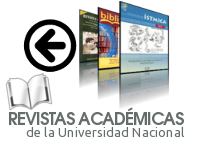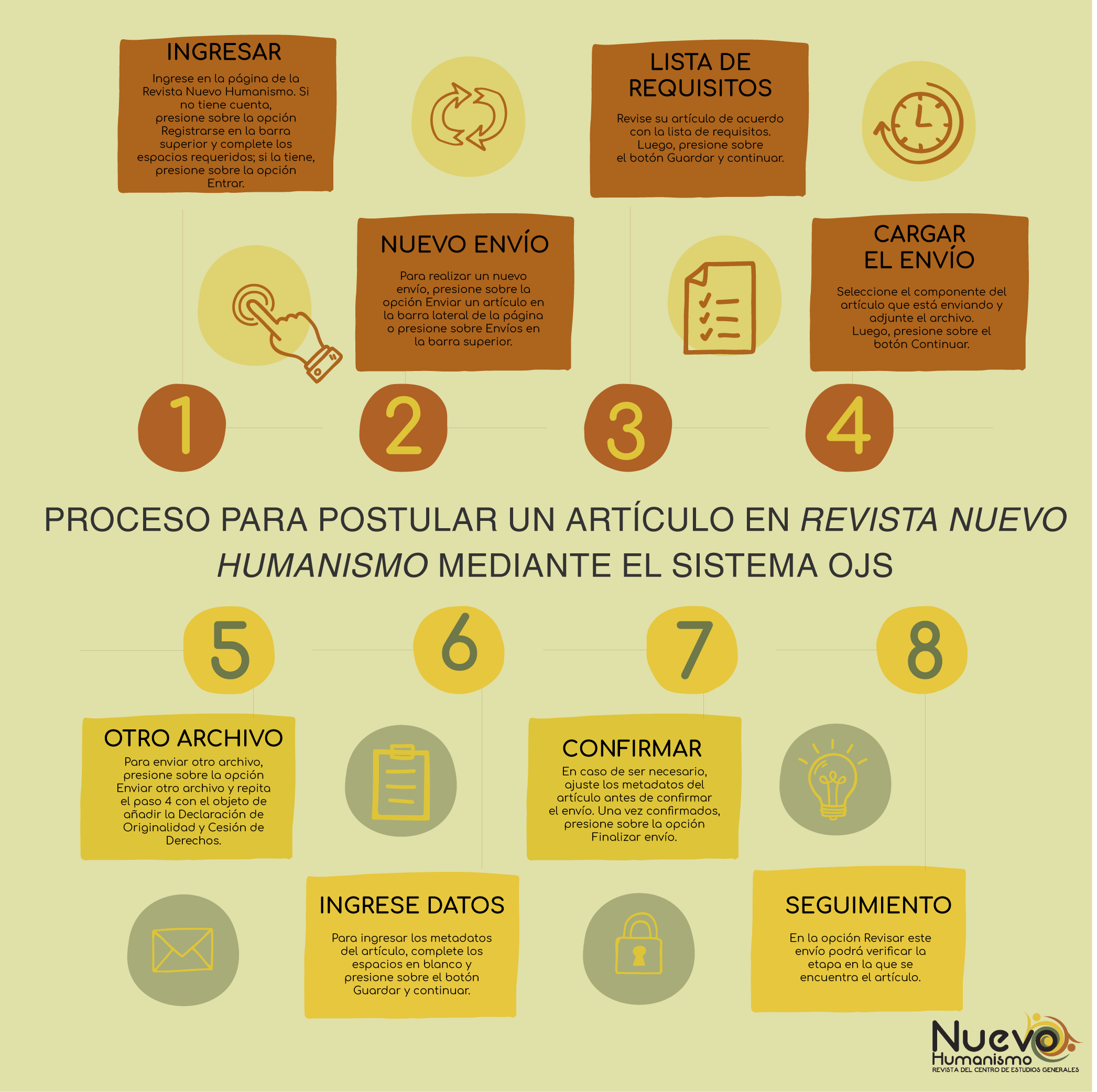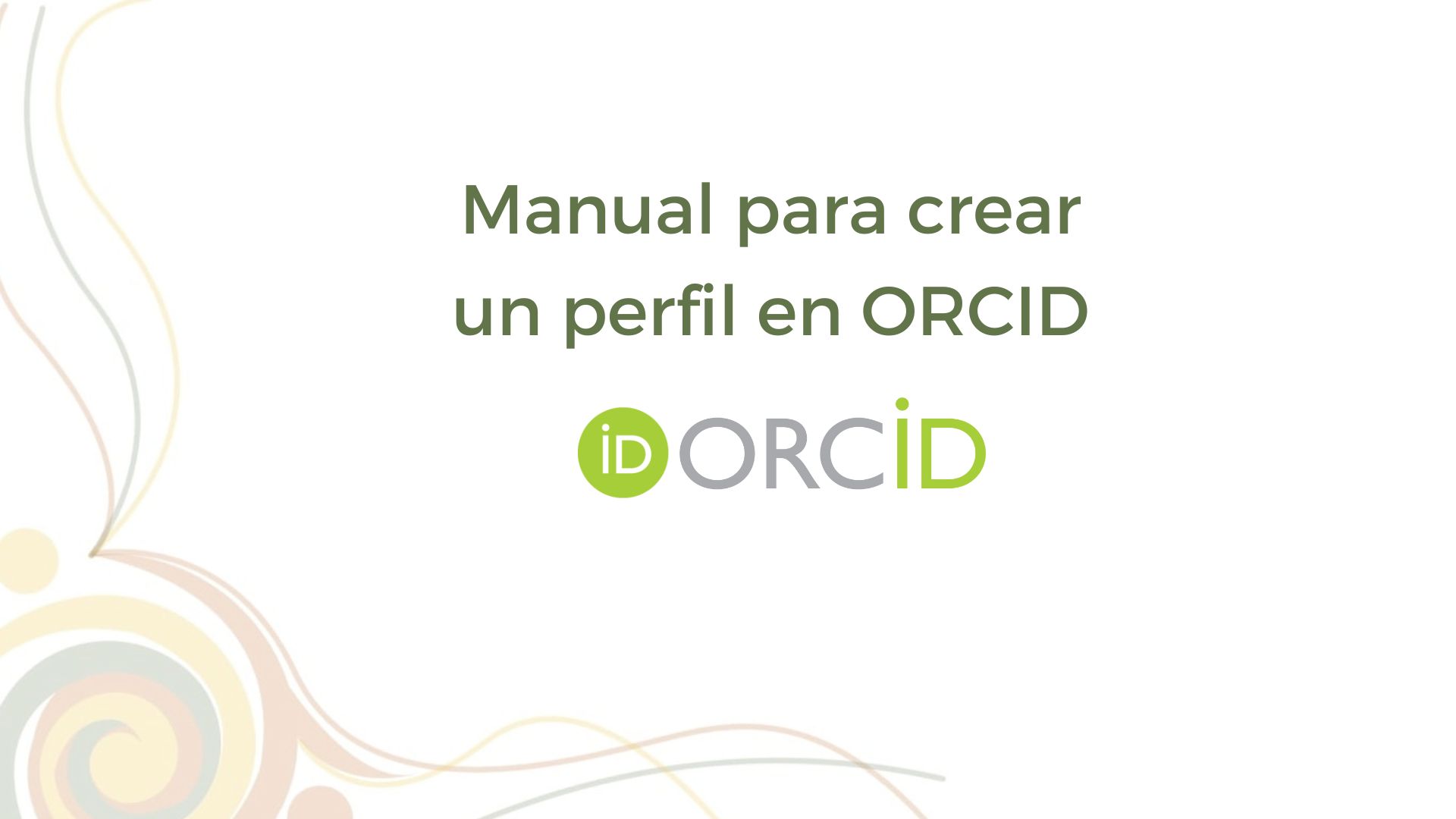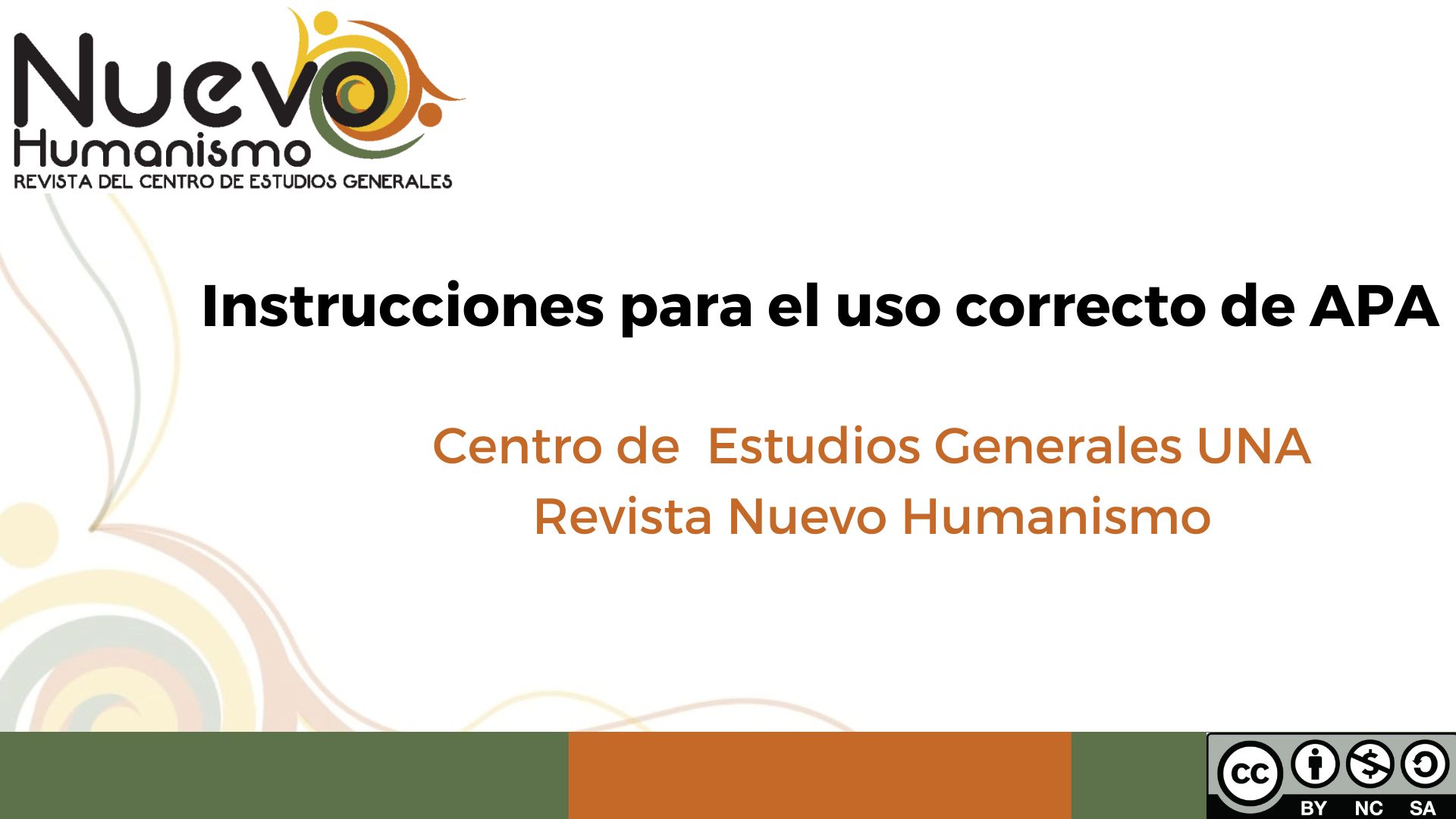About the Journal
Focus and scope
The New Humanism Journal (ISSN:1405-0234/E-ISSN:2215-4078) of the Center for General Studies of the National University publishes academic works concerning different areas of specialization of human knowledge, relevant to the development of humanist thought in our era, under the format of a megajournal.
Since its creation in 1973, the Center for General Studies has been intrinsically humanist and, for the last decade, it has been devoted to the theoretical-practical definition of a Latin American ethical-philosophical perspective called new humanism, which comprises a critical and revamped vision of human activities in contemporary society, in which converge, on the one hand, the ethical-philosophical vision and the humanities; on the other hand, the cognitive vision and the sociocultural vision (Baraona Cockerell & Mora Arias, 2017). In this context, the notions of humanism, humanities and humanistic have been differentiated, with the objective of theoretically orienting those interested in publishing in the New Humanism Journal:
- Humanism: alludes to any ethical-philosophical perspective, referring to human nature and condition (Baraona Cockerell & Mora Arias, 2017).
-
Humanities: is the set of classical disciplines that make up the so-called humanities -history, literature and philosophy- and that in the Renaissance displaced rhetoric, theology and scholasticism to emphasize the study centered on the human being and not on divinity (Baraona Cockerell & Mora Arias, 2017).
-
Humanistic: alludes to a praxis that seeks the confluence of some kind of humanism with the humanities (Baraona Cockerell & Mora Arias, 2017).
According to the above, the new humanism is not humanistic, since it does not only refer to the humanities, but encompasses the whole of the knowledge and disciplines of human knowledge, among which are obviously included the social and natural sciences, as well as popular and ancestral knowledge. This vision, which is novel and transformative, must be reflected in the articles published in the Journal Nuevo Humanismo, as the basis of its editorial line.
The Journal Nuevo Humanismo will contain the following intellectual contributions:
- Articles derived from research: academic texts that socialize the results of an empirical or theoretical research, alternating exposition with argumentation (Regueiro & Sáez, 2013). Its structure contains introduction (background, objectives and theoretical or conceptual framework), methodology (participants, instruments, tasks and procedures, statistical or qualitative analysis), results and discussion, conclusions, references and annexes (optional) on topics related to humanism.
- Bibliographic review articles: academic texts that analytically and exhaustively expose the review of specialized bibliography on an area of knowledge in accordance with the editorial line of the Journal.Its structure must contain introduction, objectives, methodology or strategy for the choice of bibliography, development or systematization of bibliography, conclusions, references and annexes (optional).
- Theoretical articles derived from didactic experiences or social action: systematization of academic activities -didactic interventions and extension activities- carried out by the Center for General Studies or by any other faculty devoted to humanism, whose content discloses the academic and innovative work carried out by the authors, around the range of humanism topics and in which the contribution to the development of humanist praxis stands out. Its structure should contain an introduction (background, objectives and theoretical or conceptual framework), methodology (participants, instruments, tasks and procedures), systematization of the academic activity, conclusions, references and annexes (optional).
- Short communications: systematization of results of an academic research in progress, always related to the theme of humanism, and in which the contribution to the development of humanist praxis stands out. Its structure is similar to that described in the articles derived from research.
Essays: expository-argumentative texts on 1) artistic productions related to dance, theater, music, plastic arts, visual arts and literature; 2) ethical, 3) social, 4) environmental and 5) scientific-technological conflicts, in which the link with humanism and the contribution to the development of humanist praxis stand out. Its structure must contain an introduction in which the topic to be addressed is presented, the purpose of the essay, the problematic of the topic to be addressed, which introduces the author's position, and the theoretical or conceptual framework to be used (optional); a development, in which the author defends his/her position with arguments for, against or in a balanced way (for and against) and evidence, a conclusion, in which the main arguments that have fulfilled the purpose of the essay are summarized (Vilar & Tolchinsky, 2022), or a new position on the topic is formulated, references and annexes (optional). - Semblanzas: academic and biographical text on an intellectual person or institution that has contributed to the development of contemporary humanist thought at the national or international level. It should highlight not only their ideology, but also the relevant events or actions that contributed to the construction of their legacy. Its structure should include introduction, objectives, background, development, conclusion, references and annexes (optional).
- Literary production: Poems, short stories, monologues, dramas and other literary productions, whose subject matter reflects the human condition and existence in contemporary society, are also included.
Target audience
Academics, researchers, university students and people interested in the humanities, so it is expected that the manuscripts fall within this scope, although the topics of depth are from various areas of knowledge.
Refereeing system: double-blind peer review.
- The editor performs a preliminary check of the manuscript to verify compliance with the subject matter established in the editorial guidelines, the rules for presentation and ethical standards.
- The manuscripts undergo a review for plagiarism or self-plagiarism using the Turnitin program.
- When the manuscripts have passed the preliminary verification, they are submitted for approval by two reviewers, recognized specialists in the topics covered, under the double-blind peer review modality, where the anonymity of the authors and reviewers is made explicit.
- The evaluation process takes between 3 and 4 weeks.
- The results of the external evaluation may be the following: a) To be published, b) To be published when the author adjusts the recommendations indicated by the evaluators (in case they indicate that some changes are necessary), c) Not to be published, d) To submit the manuscript to another academic journal (in case the subject matter does not fit the editorial line).
- If there are conflicting evaluation criteria, a third review is requested.
- When the manuscript is accepted, but with the condition that the author makes modifications, the author has 15 calendar days to incorporate or address the observations. In this case, the author must resubmit the manuscript with the remark: Manuscript with corrections/observations included.
- A Letter of Acceptance is sent to the author(s) stating that the manuscript has undergone the entire peer review process under the double-blind modality and that it will be published in the Revista Nuevo Humanismo.
- The manuscript is sent to the author(s) in PDF format to obtain approval for its approval.
- The responsibility for the editorial management process lies with the editor, who is supported by the Editorial Committee.
Frequency of publication
The Revista Nuevo Humanismo is published every six months (January-June and July-December) in digital format and on paper.
Plagiarism detection policy
The Journal Nuevo Humanismo ensures that both its editorial team and the authors and reviewers comply with the ethical standards established in the document Ethical standards and good practices of the Journal Nuevo Humansimo 2024 and that transparency prevails in the publications. To deal with cases of ethical malpractice, the Journal follows the guidelines of the Organizational Chart of the Committee on Publication Ethics (for more information, consult the International Standards: Best Practice Guidelines for Journal Editors and the International Standards for editors and authors, established by the Committee on Publication Ethics (COPE). Visit: http://publicationethics.org/about.). To ensure that the plagiarism or self-plagiarism detection process is complied with, the journal uses the Turnitin program as a tool, which controls potential non-original content by scanning for matches between the manuscripts submitted and those found in databases hosted on the web. From this, it is determined whether the manuscript is relevant or not for publication.
Open access policy
New Humanism Journal provides free, immediate and open access to its content, which fosters a greater exchange of global knowledge. For more information on this topic, please refer to the Open Access Statement.
Letter of originality and assignment of rights
For the reception of manuscripts in the Journal Nuevo Humanismo, it is essential that the Letter of originality and assignment of rights2024 be attached to the submission, since the Journal must have the author's commitment and support in all aspects of editing and possible publication of the content of the manuscript.
Sponsors
Center for General Studies, National University
Creative Commons License:
As of Vol 7. No. 1 (2019), an update was made to the Creative Commons Attribution-NonCommercial-ShareAlike 4.0 International License; previously, publications were shared under a Creative Commons Attribution-NonCommercial-No Derivative Works 3.0 Costa Rica License.










